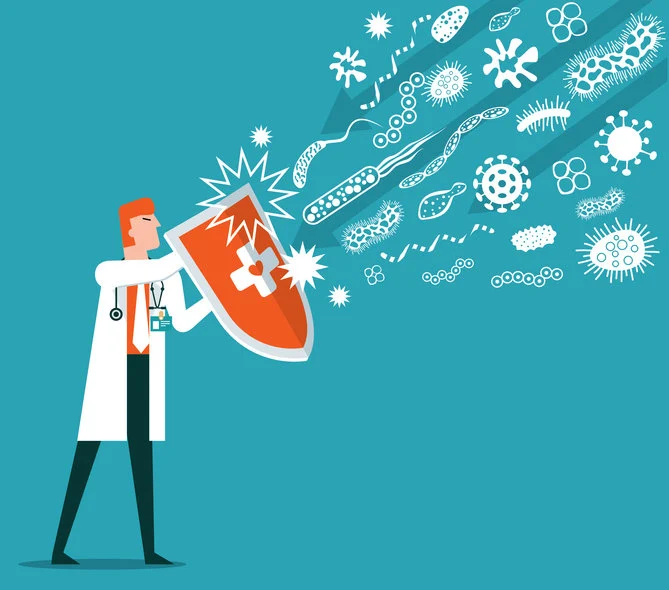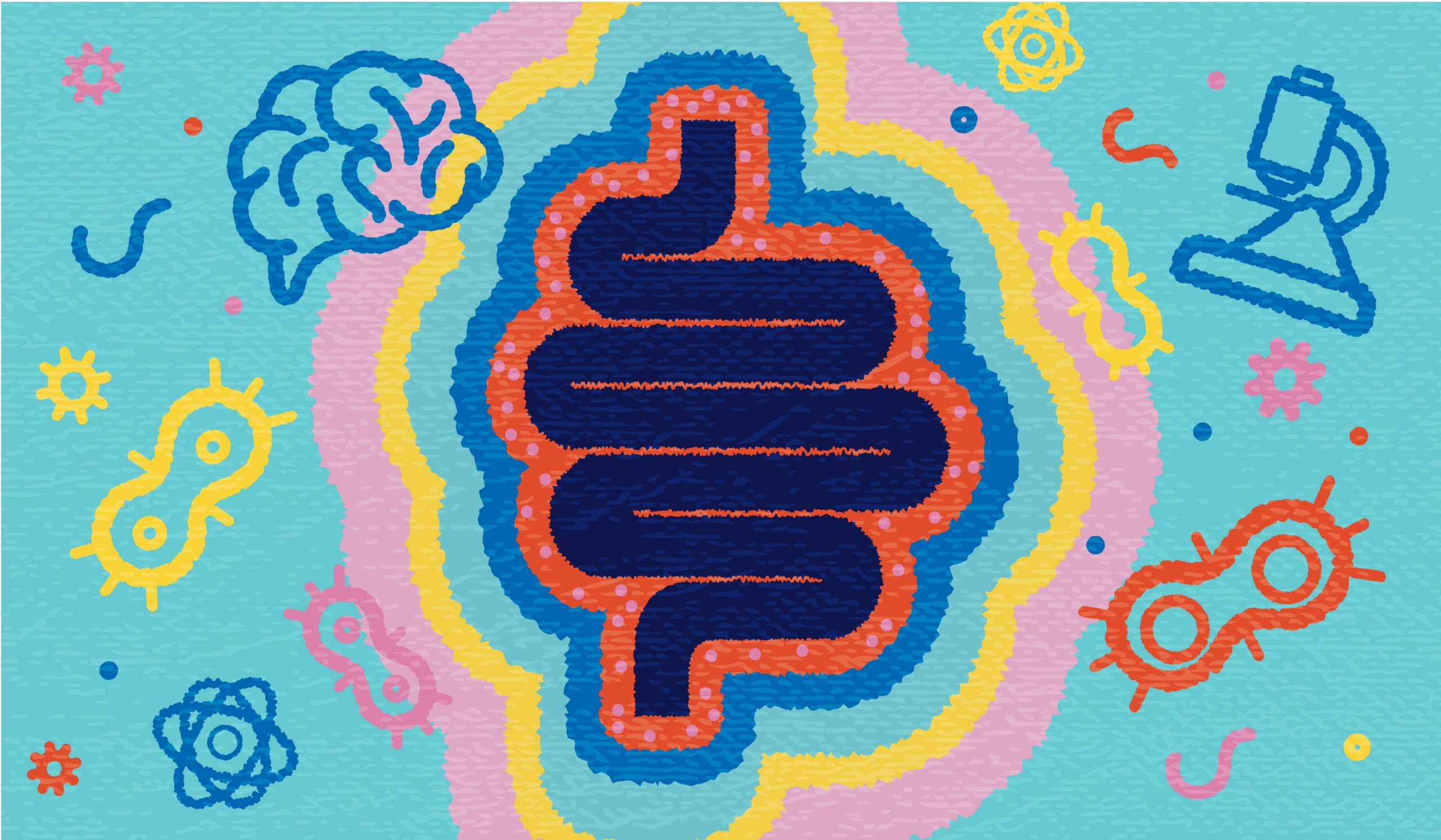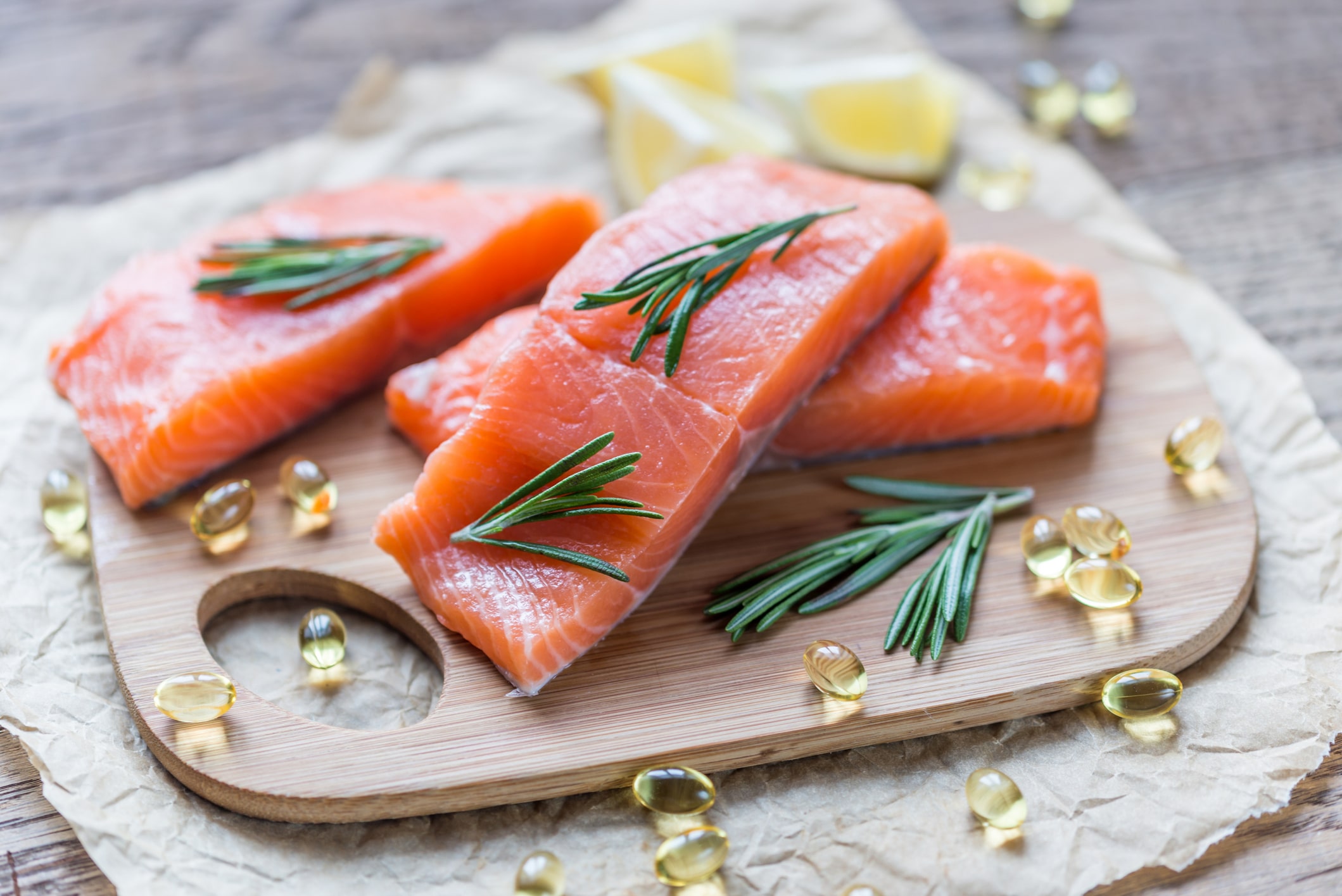I’ve had some time to sit back and learn about COVID-19 and wanted to share some of my thoughts on some of my favorite natural supports for inflammation and seasonal immunity.
I have purposely left out direct links to products. Sourcing of many products has been difficult, shipping from some manufacturers has been delayed, and discussing COVID-19 has been a polarizing subject.
Many of the other aspects of the COVID-19 discussion have already been broadcast enough, and I have left discussion of the public health strategies to the experts.
Whether you choose to try natural support through me, your health food store, or grocery store – my job right now is to educate. I have chosen not to self-promote other articles or shop links directly on this discussion.
My team can help our clients with general questions on what we may or may not have at this time separately. We cannot give direct clinical advice.
The mentions of ingredients or strategies are for educational purposes as to how to support immune function naturally, and are not to be confused as cures, treatments, or prevention. Follow manufacturer or health professional instructions when using natural supplements. They are ways to support your immune system naturally; and at the time of this writing, most have not been studied in the context of COVID-19.
When it comes to COVID-19, get tested if you display symptoms, seek appropriate care, and follow public health and CDC guidelines and directives.
Some anti-inflammatory medications may suppress the immune system and may not be recommended in the context of COVID-19 – please review any medication or over-the-counter anti-inflammatory use with your doctor or pharmacist.
These strategies are not inclusive of all options out there to support your immunity. Work with trained and licensed health professionals to help guide you through the choices.
This information does not substitute professional health advice. Available data may evolve after the date this article is published.
First, a key breakthrough in understanding the virus behind COVID-19 is that it gains entry to the body by binding to specific Angiotensin Converting Enzyme II (ACE2) receptors.
ACE2 receptors are primarily located in the lungs – and can also be expressed in circulatory system, digestive tract, brain, kidneys, ovaries, and testes (1; 2).
The lungs and the gut are the primary means that the virus gains entry into the body.
The more ACE2 receptors that are available – the easier the virus is able to infect, replicate, and create inflammation in the host.
So the COVID-19 opportunities and dangers that I want to bring attention to come back to the the increased expression of ACE2 receptors in the presence of INFLAMMATION – and, most importantly, how those sources of inflammation are often rooted in controllable diet and lifestyle factors.
The gastrointestinal system is a primary source of inflammation and immune dysfunction in the presence of leaky gut and an altered microbiome.
The gut is also a source of COVID-19 infection and replication (3).
The strategies discussed below support inflammation and a balanced immune response, and in large part, can be used safely and proactively by healthy individuals to support general wellness (independent of COVID-19 or other seasonal concerns).
Inflammation, ACE2 Receptors, and COVID-19:
Inflammation causes the body to express more ACE2 receptors in the lungs, cardiovascular system, and gut.
One of the body’s anti-inflammatory responses is to increase the expression of ACE2 receptors. The more inflammation that is present, the more ACE2 receptors.
This is a protective and normally healthy response by the body.
When it comes to COVID-19, ACE2 receptors happen to be the entry-target of the virus (4)- and because ACE2 is more expressed in inflamed (and unhealthier) individuals, the worst cases of COVID-19 may predominantly target older, and unhealthier populations.
Inflammation is not just present in the elderly, which is why I feel the virus has shown potential for serious complications with 20, 30 and 40 year olds too.
Genetic differences in how we express these receptors may also influence who is at more risk than others.
Key Contributors to Inflammation:
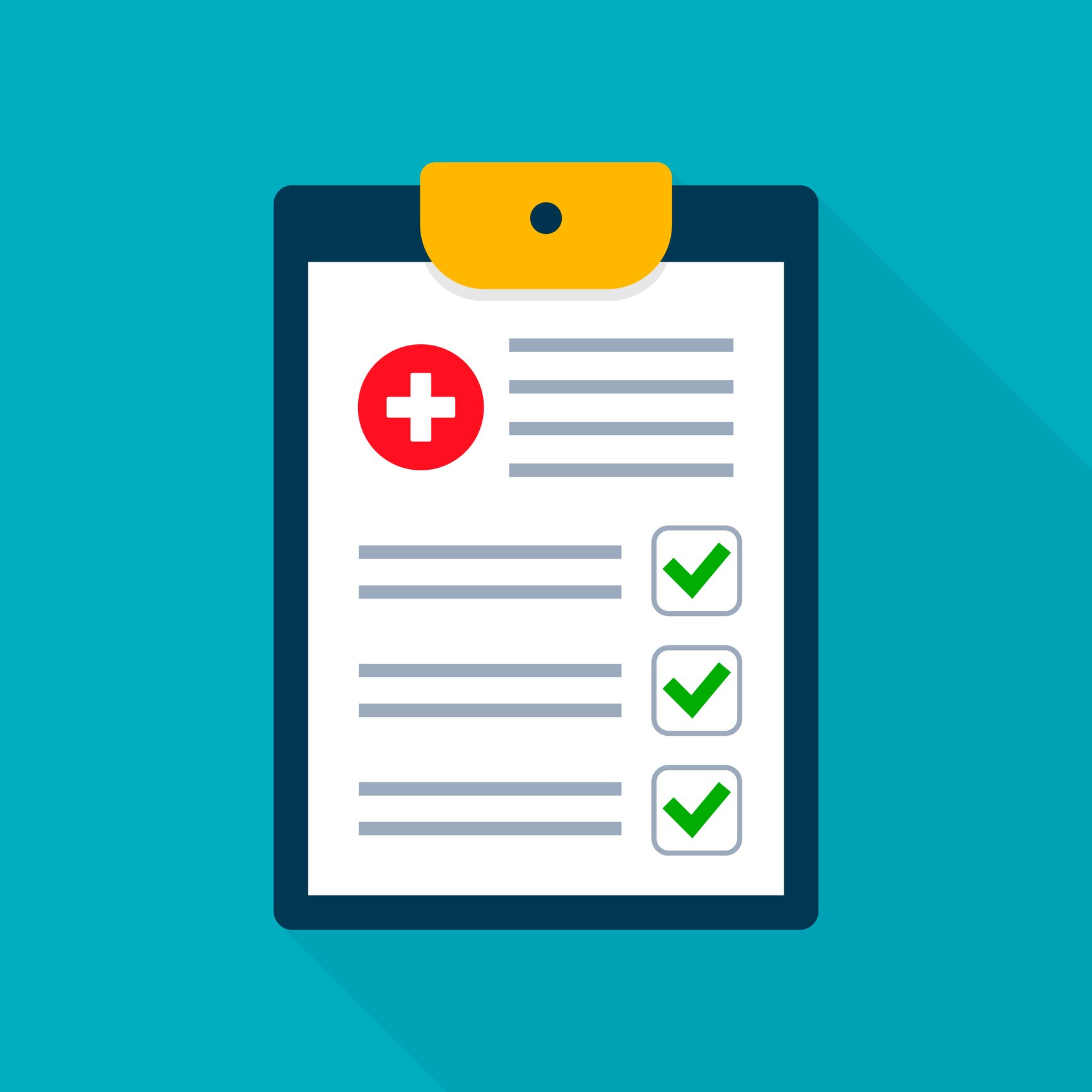
1.) Smoking
2.) High Blood Sugar /Excess Weight /Obesity
3.) Heart Disease
4.) Current Infection Load (Epstein Barr Virus, Lyme Disease, Herpes Simplex, Cytomegalovirus, Mycoplasma, Gut Dysbiosis, other pathogens)
5.) Alcohol Use
6.) Leaky Gut (Medication, Food Sensitivities/Allergies/Intolerances, Dysbiosis, Mucosal Health, Alcohol, Infections, Oral Health)
7.) Environmental Toxins (Metals, Air Pollution, Pesticides, Herbicides, Flame Retardants, Fuel Derivatives, etc)
8.) Excess Exercise / Not Resting Enough, or Not Refueling after High-Intensity Exercise
9.) Acute or chronic emotional or physical stress. Poor sleep quality
10.) Medication – Immunosuppressive drugs, ACE inhibitors (which block ACE1 and may promote ACE2 receptors)
11.) Genetic tendencies toward certain inflammatory profiles in the presence of above triggers.
In some individuals, the inflammatory reaction to the virus and its replication cycle is too much and creates an out-of-control inflammatory reaction known as a “cytokine storm” (5).
This storm of inflammation can overcome the body’s defense systems and start to attack the lungs, blood, and other organs such as the heart. This is the end-stage of the virus and can be nearly impossible to stop.
Some people do not show any symptoms, others show mild symptoms, and some progress to a point of life-threatening inflammation.
If I had to make a guess – risk of complications may come back to the question of how much inflammation one person has at baseline compared to another, in addition to how ready their immune and antioxidant systems are in the presence of a new infection.
If you look at the locations of ACE2 receptors, and the effect of inflammation on the host, some of the things we’ve learned about the virus start to make more sense.
Follow inflammation and the presence and location of ACE2 receptors, and many of the associations being made in news headlines start to make more sense.
Understanding Risk Factors and COVID-19
ACE2 receptors are found in the blood and cardiovascular tissue. The location of these receptors is one of the main reasons that heart disease and chronic obstructive pulmonary disease (COPD) are top risk factors for serious or fatal complications from COVID-19.
It may also help us understand why anti-malaria drugs may support COVID-19 patient outcomes. Although, their utility for COVID-19 patients has been questioned.
These drugs may offer immune-modulation and inflammatory support to help stave off cytokine storms (6), and more directly, may help to support or maintain oxygen delivery in COVID-19 patients while the viral infection runs its course.
Anti-malarial drugs can be associated with their own side effects and that may complicate the use of these drugs at large scale.
Artemisinin is an anti-parasitic extract from wormwood that has been used as a natural anti-malarial support that may help block destruction of hemoglobin in red blood cells. Hemoglobin is what physically carries oxygen to tissues in the body. Generally, artemisinin may also offer support of anti-inflammatory mechanisms (7).
Due to anecdotal success of prescription anti-malarial drugs, artemisinin is worth bringing up as it may support some of the same mechanisms of the anti-malarial drugs.
It has been suggested, and with some controversy, that COVID-19 may attack red blood cells, causing damage to hemoglobin, and subsequently reducing the body’s ability to receive oxygen. Some doctors claim that their COVID-19 patients act almost as though the patient was dropped in a high-altitude environment without climatizing – except the trigger in this case is not altitude, it is the potential viral attack against a component of hemoglobin in red blood cells.
Ventilators are still essential for hospital preparedness, but adjunctive supports to help with balancing the immune system and addressing potential loss of hemoglobin (and oxygen-carrying capacity of the blood) may be, as anecdotal reports have suggested, additionally supportive.
Ventilators can also physically damage and stress the lungs in intubated patients (8; 9). In most cases, these are absolutely necessary risks when oxygen delivery is the primary concern.
Exploring the utility of other options, or systemic approaches, may minimize the possibility for physical side effects to the lungs, but also and possibly more importantly, expand the treatment options available to doctors when ventilators are not readily available.
The presence of ACE2 receptors in the circulatory system is also why those with existing heart disease and hypertension are at higher risk (10), and in part, why smokers or diabetics are especially at risk since cardiovascular inflammation are common co-morbidities in these patients.
Smokers especially may have increase expression of ACE2 in the lungs (11). Inflammation from smoking is generally regarded to affect most tissues of the body (12).
Obesity is also a significant risk factor for COVID-19 (13). It is a major source of systemic inflammation (14).
Adipose cells were once thought (and still thought by some) to only be storage depots for fat – but they also produce their own inflammatory factors (15).
As inflammation increases, release of these inflammatory factors increases, and expression of ACE2 receptors increases.
Recent estimates have reported that up to 48.9% of American adults will be obese by 2030. The number will be greater than 50% in 29 states and no less than 35% in any state (16).
The New England Journal of Medicine report detailed obesity and was not inclusive of Americans simply overweight. As of this writing, the CDC reports that 71.6% of American adults are overweight or obese (17).
Loss of Immune Tolerance with Age?
As we age, we become more dependent on “learned” or “adaptive” immunity to protect us from infection as some of our natural defenses become weaker with age (18; 19; 20; 21).
Learned immunity is, in a sense, a system of controlled inflammation against outside pathogens. As we age, learned immunity may become “more confused”, the inflammation becomes less controlled as well.
As we age, a pathogen, especially a novel pathogen, may trigger an immune response that is more likely to inflict friendly fire against tissues like the lungs or heart.
Additionally, the innate immune system that makes up the other giant arm of our immune system may be weak and less able to mount an appropriate response.
This confusion or “loss of tolerance” is increased in the absence of a robust and healthy gut microbiome (22).
Since COVID-19 is a novel virus, we do not have any learned immunity against it and older adults and the elderly are more at risk. Other components of their immune system may also be at lower strengths, especially against a new threat.
If you add seasonal temperature drops, co-morbidities (especially obesity, heart disease and diabetes), and unhealthy lifestyle behaviors, risks can be compounded.
This loss of tolerance as we age can also play a role as to why older adults are at at much more risk for COVID-19 complications.
Healthy gut bacteria and a healthy gut mucosa help to “train” immune cells – so that immune and inflammatory reactions are less likely to inflict harm on our healthy tissues (23).
Maintaining a healthy gut and microbiome is essential to support a healthy, balanced, and properly trained immune system.
So while we may have less control over whether we are eventually exposed to COVID-19, we do have control on how we manage inflammation, protect our gut, and keep our immune system properly balanced and trained against invaders and not our own tissues.
Natural Strategies to Support Immune Health and Inflammation
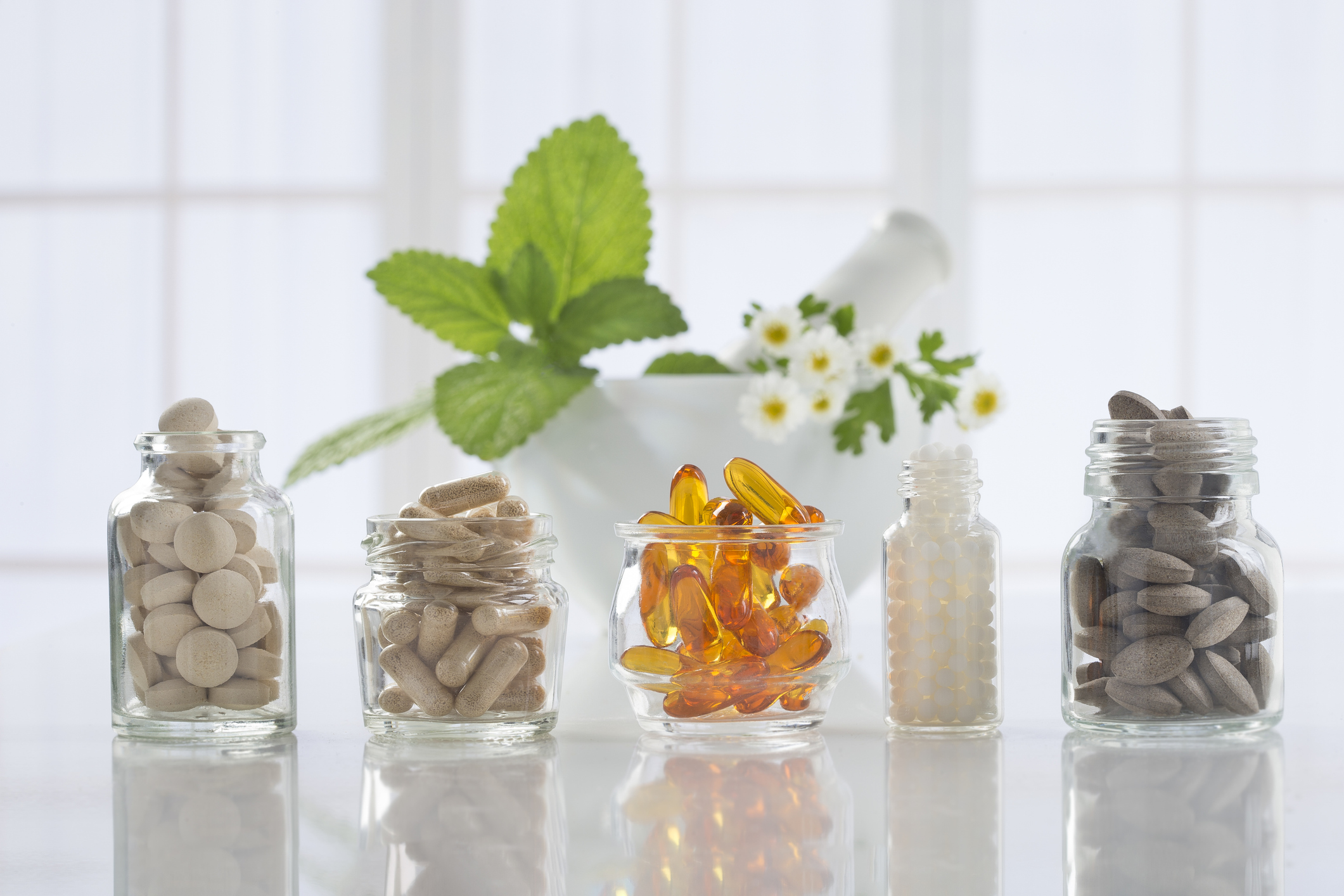
I. Reduce stress with deep breathing, meditation, and gratitude. Get healthy sunlight, sleep, and exercise. Stay hydrated. These are foremost and can be implemented at home and can be implemented in most cases at no extra cost.
II. Support a healthy gut microbiome and heal leaky gut – These are the mucosal healing, probiotic, and prebiotic strategies that are central to many of my articles and my one-on-one strategies.
III. Support nutrient factors such as Vitamin D, Vitamin C, Vitamin A, Zinc, and Omega 3 Fatty acids.
IV. Consider immune, inflammation, and antioxidant supports. Avoid revving up inflammation or suppressing the immune system.
V. Antimicrobial Herbs and Probiotics
VI. Add emphasis to regular guidelines for a healthy, hypoallergenic, and anti-inflammatory diet.
VII. Find and maintain human connection in creative ways.
I. Reduce Stress
High stress will suppress normal immune and gut function. When stressed, the body is worried about getting away from the “danger” and dealing with other functions later.
Supplemental approaches to support the stress response are available with adaptogenic herbs such as ashwagandha, holy basil, rhodiola, and magnolia bark – as some of the most popular.
Relaxing factors such as magnesium, L-theanine, passionflower, and others help support calm. Drink caffeine in a smart manner – it is important to cycle away from coffee for 7-14 days periodically every 6 weeks or so – even if that means switching to decaf as opposed to complete removal through that period.
Some of the biggest proponents of coffee like Dave Asprey (Bulletproof coffee) will also be the first to tell you that periodic abstinence is important – not just for the stress response, but for brain pathways related to mood, sleep, and focus.
Phosphatidylserine (PS), phosphatidylcholine (PC), and palmitoylethanolamide (PEA) may help to reboot our brain’s response to stress and inflammation.
While your experience may differ and their use is beyond the scope of this article, I’ve had some amazing responses by a number of clients who have used the PS, PC, and PEA combination over a period of three months or longer.
II. Support a Healthy Gut
The gut barrier can express ACE2 receptors, and does so at a higher rate when inflamed.
The gut is home to some 70% of total immune cells in the body – it is a critical player in protecting us from pathogens that can be swallowed via saliva.
When the gut is leaky, it allows toxins, large food proteins, and unwanted pathogens to pass into the bloodstream more freely. Most notably, lipopolysaccharides (LPS) can cross the gut into the blood and are a major cause of systemic inflammation. As a result. LPS may also drive more expression of ACE2 receptors.
Removing sensitive foods, supporting digestion, and supporting the health and diversity of the gut microbiome with probiotics and prebiotics will all support a healthy immune system.
III. Individual Nutrients to Support Natural Immunity
Vitamin D
– Vitamin D is a natural anti-inflammatory hormone that also helps referee our immune system. Many Americans are deficient at baseline and could use vitamin D. We look to optimize blood levels of 25-OH vitamin D around 50-70ng/mL. Sunlight during peak hours of the day is important, supplementation can help. Food sources are typically not strong enough to make a significant impact. When taking high levels of vitamin D, we recommend taking vitamin K2-7 too. Vitamin D also helps our body absorb calcium, the K2-7 is important to managing where the calcium goes. Vitamin
Vitamin C
–Many online retailers including myself are sold out, but physical brick and mortar stores may still carry vitamin C. 1000-2000mg in split doses at 500mg at a time may be enough. It has long been accepted by mainstream and alternative medicine as an immune support.
New York City doctors have been reported using IV vitamin C as an adjunctive treatment in care of COVID-19 patients with strong anecdotal success.
The potential antiviral roles of vitamin C (and vitamin D) was recently evaluated (April 2020) in context of the COVID-19 pandemic (23; 24).
-Quercetin is very similar to vitamin C in its structure and shares properties of vitamin C. It may be more available in stores than Vitamin C and may be another option for you for a seasonal immune support. Quercetin is used commonly for its natural anti-histamine properties as it relates to seasonal allergies, but also supports possible anti-inflammatory and anti-viral mechanisms (25).
Vitamin A
-While beta-carotene is a Vitamin A precursor and is highly prevalent in fruits and vegetables, it requires a conversion process that can be slow or absent in some individuals.
Sources of preformed Vitamin A include cod liver oil, eggs, and supplements. Vitamin A supports many aspects of immunity including the mucosal and barrier functions of the gut (https://www.ncbi.nlm.nih.gov/pubmed/8801180; https://www.ncbi.nlm.nih.gov/pubmed/10832460; https://www.ncbi.nlm.nih.gov/pubmed/10604208).
Zinc
–Zinc is necessary for healthy immune function and mucosal health (26; 27; 28). Zinc levels are essential for normal immune function (29). It’s commonly used to support seasonal immunity and your zinc needs increase when you are ill.
The use of zinc has also been reported by New York City and Chinese doctors in adjunctive care for COVID-19 patients.
Omega-3 Fatty Acids
–EPA, DHA, and DPA are naturally anti-inflammatory (30). Current evidence suggests they help counterbalance inflammatory omega-6 oils in the diet (soybean, corn, safflower, sunflower, etc).
DPA is a “forgotten” omega 3 that acts as a reserve supply of EPA and DHA, while also supporting its own unique anti-inflammatory mechanisms and conversion products.
-Omega-3 fatty acids also convert to specialized pro-resolving mediators (PRMs/SPMs). PRMS/SPMs protect the gut barrier and help “resolve” the inflammatory cycle once it is complete (31; 32). PRM’s/SPM’s help to turn off inflammation and initiate final cell clean-up when it comes to the inflammatory response. These resolving compounds may also be supportive for airway inflammation (33).
- –Cod liver oil is not just a natural source of EPA, DHA, and DPA. It is a natural source of pre-formed Vitamin A and Vitamin D.-Although all omega-3 fatty acids are associated with anti-inflammatory mechanisms, fish oil formulas high in EPA tend to be more suited for anti-inflammatory properties of fish oil as it pertains to counter-balancing inflammatory omega-6 oils, as well possibly providing more targeted anti-inflammatory benefits for the gut (34).-Vegans and vegetarians may consider krill oil. Alpha-linolenic acid is also a plant-source (such as flax oil) of omega 3 fats, but its conversion to EPA and DHA is weak.Unique person-to-person genetics can make this conversion even weaker and this can make vegetarians and vegans especially prone to omega-3 fatty acid deficiency.
IV. Immune, Inflammation, and Antioxidant Support

1.) Systemic Enzymes
–Some enzymes help to thin mucus secretions while also supporting normal mucus production (35; 36) . Mucus plays vital roles in the respiratory and gastrointestinal barrier systems and can be a mediator of proper immune communication and training.
They may play novel roles in respiratory support. These substances also help eat up damaged cells and proteins and support immune function and inflammation (37; 38; 39).
Nattokinase, protease, bromelain, and serratiopeptidase come to my mind foremost and they are often included in immune and inflammation support products.
Enzymes such as nattokinase also have been known to help digest nasyl polyps (40) – scar tissue in the nasal cavity caused by inflammation or past infection. The presence of scar tissue also promotes recurrence of sinus infections.
Systemic enzymes (often high in proteases) are taken on an empty stomach to optimize the systemic effects for the blood and body (41). This is because in the presence of food, they may help digest your food foremost!
Some enzymes can work to purify the “stickiness” or inflammatory, clotting potential of the blood (42). While some of the risk is hypothetical and may only matter if the blood is “sticky” in the first place, check with your doctor prior to use if you are on any blood thinning medication.
2.) Glutathione Support
Glutathione is the body’s master antioxidant and a powerful immune modulator. It is one of the most important in-house protection systems of the body.
When inflammation occurs, it creates oxidative stress, and glutathione can help to mop up this release.
-N-Acetyl Cysteine is a non-enzyme that is known as a mucolytic, and it also supports glutathione levels.
-Alpha-Lipoic Acid (ALA) may also help the body recycle its current production of glutathione – allowing you to get more out of the supply you’re already making. It also is an antioxidant.
You can also supplement directly with glutathione, but it needs to be in a special capsule or liposomal form for proper delivery.
Some reduced glutathione can be absorbed, but I still emphasize taking a glutathione precursor like NAC, a recycler like ALA, or going with a liposomal glutathione.
-Liposomal Glutathione is a form of glutathione that optimizes its delivery and absorption.
Intakes of 100mg-2000mg can be used on a daily basis.
Acute support may increase intake needs to 4000-6000mg. It can be an expensive option and in many cases people choose to take a level that’s affordable to them.
Otherwise one might choose to use a NAC and/or ALA supplement more affordably. All of the strategies can be used alone or in combination with one another.
Mitigating inflammation in the first place will also support glutathione because you won’t use up or put strains on your existing supply.
3.) Support Inflammation
Curcumin, fish oil, hops extract/xanthohumol, boswellia, ginger, and specialized pro-resolving mediators (PRMs/SPMs) are among some of the most powerful and recognized natural agents to support inflammation naturally.
Immunoglobulins (IgG) can also be very supportive of inflammation without suppression of the immune system.
These strategies work to cool inflammation while also supporting immune balance
4.) Core Antioxidants
The body is equipped with powerful antioxidant systems of its own. It can also be supplemented with antioxidants from colorful foods, as well as supplements.
- In addition to glutathione, coenzyme Q10 is a powerful antioxidant that protects the fatty membranes of our body, heart, and brain. Ubiquinol is the best-absorbed form of coenzyme Q10.
- PQQ is a newer substance that may help the body make its own coenzyme Q10 while also supporting its own antioxidant benefits (43).
- Vitamin E is prevalent in fruits, vegetables, and nuts. It also can be supported with tocopherol supplements. I avoid supplementing with alpha-tocopherol, and look more to a mixed tocopherols/tocotrienols. Vitamin E and its related forms help protect fatty tissues of the body from oxidative stress.More often than not, a healthy diet should provide ample Vitamin E, but sone unique tocopherol and tocotrienol products may provide unique adjunctive support to optimize the antioxidant benefits
- Selenium, Zinc, Manganese, Copper also support our in-house antioxidant systems. A few brazil nuts can supply body needs of selenium. Mushrooms, greens, and nuts are natural sources of these trace minerals.
Some of these minerals compete with one another for absorption, so take separately when supplementing.
- Superoxide dismutase (SOD) is a powerful antioxidant in the body and can be supported with zinc, copper, and manganese. SOD can also be taken directly as a supplement.
- SOD is broken down by stomach acid, so if supplementing with SOD directly, you want to take it with a special enteric capsule so that the contents are released after the stomach. SOD added to a non-protected capsule can be a waste.When glutathione levels are low, the body may turn more to its SOD systems. And, likewise, when the SOD levels are low, the body is more dependent on healthy glutathione function.
- Melatonin has also been discussed as a supportive agent as it has anti-inflammatory and antioxidant properties, and may help support antioxidant activity in the brain. It also supports immune function and sleep which can support better outcomes in those that are ill (44).Some of the possible utility in the context of COVID-19 may relate to the presence of ACE2 receptors in the brain.
- Since ACE2 is expressed in brain tissue, other brain or neuro-supportive supplements like gingko biloba, Lion’s mane mushroom, alpha lipoic acid, curcumin, resveratrol, or palmitoylethanolamide (PEA) may support brain and nerve-protective functions in the context of acute infection.
V. Antimicrobial Herbs and Probiotics:
a.) Monolaurin
Monolaurin is a fat naturally found in breastmilk that is derived naturally from coconut oil. It is well-regarded as a natural antimicrobial compound – meaning it has a natural potential to limit the growth of bacteria, fungi, parasites, mold, and viruses.
In vitro study has shown that monolaurin has an ability to disrupt the structure of enveloped or lipid-coated viruses (45). Enveloped viruses are fatty capsules that contain the RNA or DNA material of a virus.
The virus depends on a host to replicate that encapsulated RNA or DNA material – and largely through its inflammatory effects (coughing, sneezing, contaminated surfaces), the virus is able to eventually infect and hijack a new host and the cycle continues.
Coronaviruses, independent of the strain, are enveloped viruses. COVID-19 is caused SARS-Cov-2 – an enveloped RNA virus.
Remember, COVID-19 is a novel virus, so any studies that could be conducted are in progress at best, and are less likely to involve natural compounds.
So the ultimate frustrating answer to “What does the science say?” is that we don’t know yet.
Monolaurin sounds like a great option as it is regarded anecdotally along with some in vitro and animal studies to help support a natural response to enveloped viruses such as influenza, herpes simplex, HIV, and Epstein Barr virus to name a few.
It’s important to understand that an antimicrobial can increase short-term inflammation as a result of a killing activity against viruses, yeast, bacteria, and fungi.
Short-term inflammation may not be preferred and, as commented on in The Lancet, may act as a double-edged sword when it comes to COVID-19 (46).
Natural Strategies for “Die-Off” or “Herx” from Antimicrobial Support
When some microbes die, waste, toxins, and debris can be flushed into the system.
When this happens the body may experience some fatigue, headache, body ache, or mental fog, as well as a short-term inflammation due to the response to the microbial material.
Over the long-term, antimicrobial extracts will work to modulate inflammation by reducing the microbial/infectious load on the body.
This short-term increase in inflammation associated with die-off may not be preferred in the context of COVID-19, and you may wish to consult with a health provider prior to using natural antimicrobials.
The question of how to suppress inflammation, without suppressing the viral immune response is one of the core dilemmas facing physician’s who may generally turn to steroids or other anti-inflammatory drugs that may be associated with immune-suppression.
Natural anti-inflammatory extracts from herbs may be more immun0-modulatory in nature, and able to support inflammation and balanced immune function at the same time – while also boasting high safety profiles.
A history of bacterial overgrowth, candida overgrowth, or other chronic infection may increase the chances of experiencing this short-term rise in inflammation.
This response to antimicrobial herbs, probiotics, and similar strategies is known as a “die-off” or a “Herx” response.
This response can sometimes be counterbalanced by some of the strategies mentioned previously, as well as by introducing these agents more slowly.
Common Strategies to Consider for Die-Off:
- The first strategy for die-off is to stay hydrated so you continue to flush wastes. You may want to take it easy when going through die-off as the process can be a stress on the system.
- One of my favorite counterbalancing strategies is to take supplemental Immunoglobulins (IgG). 2-4 grams (2000mg-4000mg) split in morning and evening. Doses can range from 2-10 grams. Most support can be reached in the 4-5 gram range – more is not necessarily better. 10 grams is used in medical food preparations. Intake less than 2 grams may still be supportive. IgG are supportive for inflammation as they directly neutralize or bind toxins, help maintain the gut barrier, and help modulate the immune system (47; 48)
- For those unable to take IgG due to issues with beef or concerns that it is not a vegan-derived product, a very slow titration period is the next best guideline. The IgG I use is derived from bovine serum (blood). Other IgG may be derived from colostrum (cow milk) – but colostrum-derived IgG may contain traces of casein, whey, or other proteins where sensitivities are common.Serum-derived IgG avoids issues of milk sensitivity, but is not suitable for those with a beef allergy or sensitivity.A milk thistle or curcumin supplement that supports liver health, or glutathione support (see above) may serve as alternative and plant-based options to help the body mop up some inflammation and support the liver. Activated charcoal and Bentonite/Zeolite clay are also well-regarded to help bind up potential toxin release in the gut.
- Systemic enzymes (protease, cellulase, etc) may also help support degradation of inflammatory proteins and cell debris that can be released from “die-off”. Some may promote more die-off in the first place as they can work as “biofilm” disruptors and help antimicrobial agents work better. Yet, when die-off has already taken place, they will work to digest the inflammatory proteins and cell debris that may have been released.
- I conjecture that a number of plant polyphenols and flavonoids (compounds similar to curcumin or quercetin), such as resveratrol, licorice root, gingko, and others may ultimately reveal supportive anti-inflammatory and immune-modulatory mechanisms in the context of COVID-19. For now, formal study may be absent.
- Strong chelators (often used in similar contexts of weaker binders) are used for heavy metal or other types of poisoning may not be ideal to use in the context of COVID-19 concerns as chelation is a stressful process on the body as these compounds are “pulled” out and detoxified.
- On a related subject, I’m generally a fan of dental amalgam (mercury) removal, yet timing amalgam removal procedures with a holistic dentist during a viral pandemic may not be ideal. Hypothetically, it may be determined professionally that severe antibody-reactions to mercury may be present and worth more immediate removal as it pertains to individual circumstances.
If one was to feel foggy-headed, bloated, or experience diarrhea when introducing a natural antimicrobial – it can be a signal to slow down or perhaps add supportive anti-inflammatory supplements and natural binders.
Some work through this “Herxing” naturally as it is a short-term response that may only last one-three days.
I remind my clients that die-off or Herxing is also widely called a “healing crisis” and is generally recognized as a healthy sign of a product working.
“Low and slow” is the best rule of thumb when it comes to dealing with natural products that may trigger die-off.
Providing enough support while not flaring up inflammation is a balancing act for practitioners and clients alike when it comes to natural immune support.
b.) Echinacea, Oregano oil, Grapeseed Extract, and Berberine.
These popular herbal extracts are generally more antibacterial in their nature.
I regard them less for direct antiviral support – but they can be supportive for the immune system overall.
In this way, they may indirectly support viral concerns (and there may be a handful of references to support direct effects with certain viruses too).
Herbal antibacterial compounds may not directly target viruses, compared to the laboratory evidence for an extract like monolaurin, but they are still well-regarded to support general immune function.
Echinacea, oregano oil, grapeseed extract, and berberine may trigger “die-off” responses as well.
Berberine interests me because it simultaneously supports normal levels of blood sugar and insulin while also supporting a healthy microbiome. It is being used in a more widespread fashion due to its potential to support metabolism and healthy aging.
Blood sugar problems often come hand-in-hand with cardiovascular disease – and both are among the highest risk factors of patients succumbing to COVID-19 (49; 50; 51; 52).
Berberine is an interesting tool to support healthy glucose metabolism while also supporting a healthy microbiome.
Other blood sugar supporting herbs and nutrients such as Gymnema sylvestre, Bitter melon, Resveratrol, Nicotinamide Riboside (“Niagen”), Vanadium, Magnesium, and Chromium may support inflammation caused by excess energy intake, blood sugar spikes and poor insulin control.
Introduce antimicrobial herbs slowly, add anti-inflammatory support when needed, and work with a healthcare professional if you have questions as to what is right for you.
Long-term use of most antimicrobial herbs, at least at high-dose, is not recommended as healthy bacteria may eventually be affected – I generally use them for one to three month periods, occasionally up to six months or longer for more difficult cases.
Eventually, supplemental, dietary, or environmental sources of diverse probiotics and prebiotics are necessary to maintain a healthy microbiome.
c.) Spore Probiotics
Spore-forming, Bacillus probiotics have been clinically studied to reduce leaky gut, improve metabolic factors, and help support other healthy bacteria throughout the digestive tract (53).
Spore probiotics also act as modulators of the microbiome – they support the growth of healthy bacteria and disfavor the growth of unhealthy bacteria (54; 55; 56).
You may wish to introduce spore probiotics more slowly during the pandemic if first starting them, but they are offering very valuable support for immunity, mucosal health, and the gut microbiome.
We recommend introducing spore probiotics and personalizing a strategy to include supplemental IgG, glutathione, or general ani-inflammatory and liver support.
Follow manufacturer instructions as to increasing intake slowly over the first couple of weeks.
d.) Lactobacilli Probiotics
Lactobacilli probiotics can be immune-stimulating and may contribute to immune-activation over the first few days of their use (54). This is a healthy response, but in context, may not be preferred without other supports.
Their use might be delayed in preference to the use of other classes of probiotics such as Bifidobacteria, Saccharomyces boulardii, or spore probiotics.
Likewise, an IgG supplement may help mitigate concerns of inflammation while simultaneously supporting immune-modulation. Individual response varies.
Introduce a new Lactobacilli-containing mix slowly if you have concerns, and use personalize adjunctive support with some of these strategies when you do.
If you’ve been taking a Lactobacilli probiotic – chances are you’ve already made it through those first 3-5 days of immune stimulation and you’re more likely to be benefiting from their general immune-modulating and balancing benefits.
e.) Bifidobacteria Probiotics
Bifidobacteria avoid the early immune-stimulation that has been associated with Lactobacilli, bifidobacteria are associated with more “balancing” immune benefits.
If Lactobacilli seems to be “too much” for your system, try switching to a Bifidobacteria probiotic.
Bifidobacteria also support production of short-chain fatty acids – which are important to supporting healthy immune responses and maintaining the health of the gut lining and mucosa.
Other supportive microbial strains include Akkermansia muciniphila and Faecalbacterium prausnitzii.
These keystone strains of microbes are not stable enough to be taken as oral probiotics – but may be supported through the consumption of prebiotics, such as a range of oligosaccharides which can be taken supplementally.
Prebiotic oligosaccharides also support Bifidobacteria growth.
f.) Garlic – Using Food and Supplements
Garlic has been recognized for its medicinal purposes for thousands of years. It supports cardiovascular health, has been recognized as a broad-spectrum antimicrobial, and most people agree that it tastes pretty good too.
Look for an aged, high-allicin/alliin product supplementally – preferably enteric coated or in a special capsule so you’re not burping up garlicky aftertaste.
When cooking, it is actually best to crush or chop garlic and let it sit for a good ten to fifteen minutes prior to cooking.
When you cut garlic, it mixes natural precursor compounds that together that react and form the healthy compounds that put garlic on the map as a superfood.
If you simply add garlic to food directly after chopping or pressing it, you’re missing out on the majority of its food-as-medicine properties. Instead, let it sit for 10-15 minutes.
When cooking, the first step I do is chop or press my garlic to allow this time to pass while I prepare & add the other ingredients.
In doing so, I optimize the creation of garlic’s health-promoting compounds. Supplements can be useful for those not wanting to wait the 10-15 minutes, or who don’t like the taste and opt for an enteric coated tablet or specialized enteric capsule.
VI. Maintain a Regular, Healthy Diet
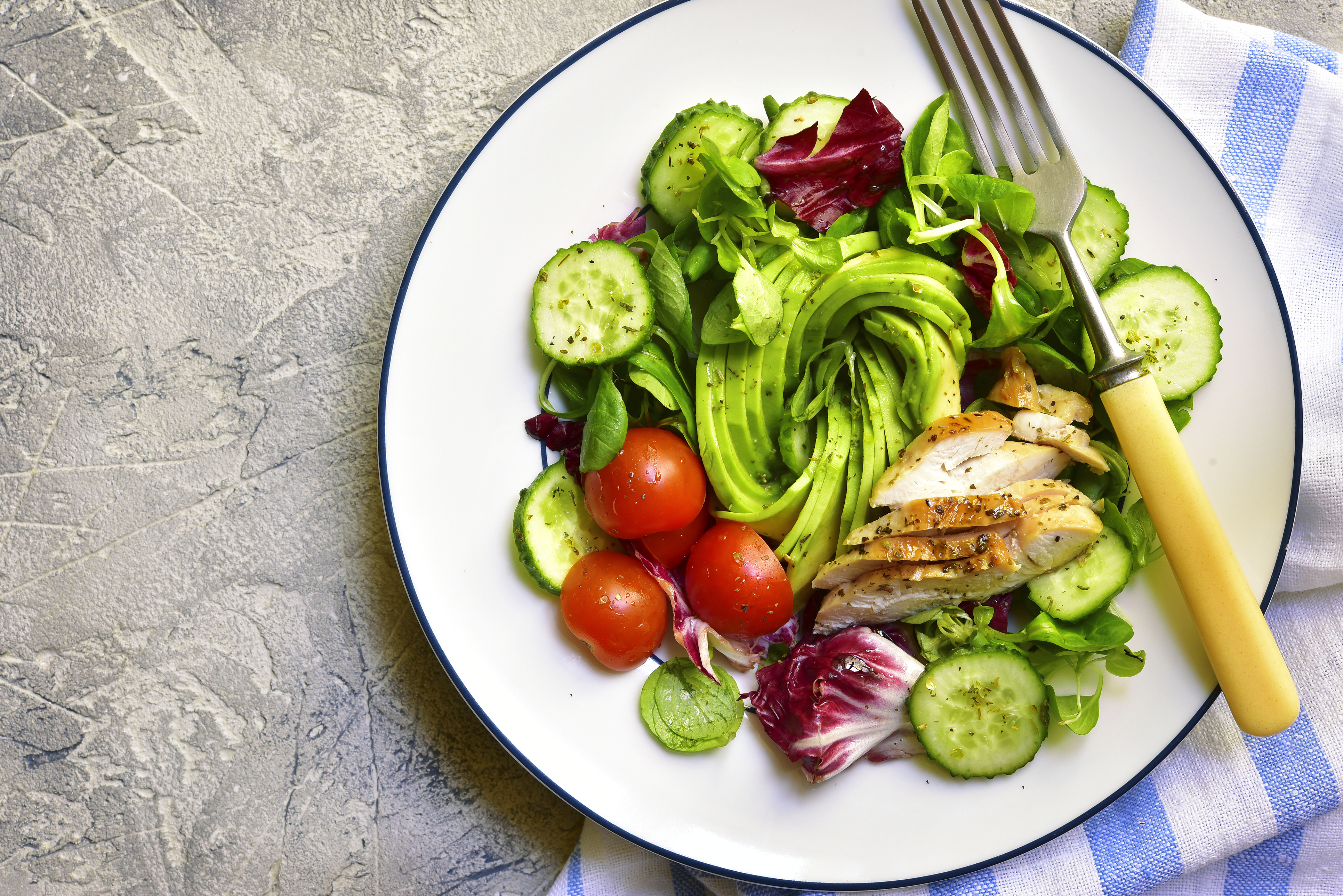
During our uncertain time, the normal call for a healthy diet doesn’t change; it becomes more emphasized.
Despite panic buying at the grocery store, I have found the produce section to have remained in good shape. Utilize grocery delivery and pick-up services when available. Avocados are nice to stock up on because they last awhile and pack a lot of nutrition.
Buy a mix of ripe and unripe avocados and even though you may not be making it to the store as often, this is one strategy on how to “stock up” on healthy food.
Meat and fruit can be frozen, and so can greens which may still taste fine in a smoothie. Onions and garlic last awhile when stored correctly. Acorn squash, spaghetti squash, zucchini, cucumber, parsnips, sweet potatoes, and turnips are pretty resilient to going bad and can help bring bulk to freshly cooked meals.
Fresh greens have remained readily available at the store but improvise where you can when stuck at home and consider gardening your own sources whether it’s limited to your backyard or a small herb garden on a patio/balcony.
I’ll emphasize some of the more acute concerns with inflammatory diets here. These would be recommendations for everyday health and seasonal immune support.
Healthy Diet Reminders:
a.) Avoid or minimize gluten and wheat-containing foods, as gluten causes a leaky gut in everyone that consumes it (55) – and this leaky gut response happens independent of an allergy or sensitivity.
b.) Be extra mindful of sugar and alcohol intake – many of us are bored, stuck at home, and stressed and might be prone to stress-eating or more alcohol than normal to calm nerves.
Excess sugar and alcohol intake damages most tissues in the body and may lead to increased expression of ACE2 receptors on the surfaces of your lungs, gut, and circulatory systems that the virus uses to enter the body.
Extra stress and uncertainty may also lead to a start or increase in cigarette use, which will increase inflammation and expression of ACE2 receptors in the lungs.
c.) Many processed foods that people are buying in bulk contain canola, safflower, sunflower, cottonseed, soybean and corn oils. These are highly inflammatory, oxidize easily in storage, and become unstable when heated.
Look instead for coconut, palm, avocado, olive oil, ghee, butter, duck fat, lard, and tallow.
Olive oil is probably the friendliest to taste, cost, and the amount of ways it can be used. For higher heat cooking, look to coconut, or avocado oil. Palm can be used but its production is associated with rainforest and habitat destruction, so it is off my list for that reason.
d.) Be mindful and try to use more natural means to calm your nerves and fill up your restless time with reading, journaling, stretching, walking, and exercise. Many times we are not hungry, we may be thirsty or bored.
In nature, it has been suggested that fruit was a natural source of hydration when water was not available, so our bodies may experience sugar cravings when we are not adequately hydrated.
If you’ve been wasting time or watching TV, look for a productive activity. If you were reading, writing or working, it might be time to take a break and move your body or do something a little more fun or mindless.
Try to find a healthy balance between “pleasurable” and “purposeful” activity. Too much of one can come at the expense of the other and both are needed in a 50/50 ratio for happiness.
Accept that you will experience some listlessness, and avoid the urge to fill those voids with overeating, gaming or TV-binges, or overuse of alcohol.
VII. Maintaining Human Connection During Social Distancing Guidelines
A loss of “connection” is a huge and under-appreciated contributor for addictive behavior, brain inflammation, and physiologic stress.
Enjoy the extra time with your partner or kids. Find new ways to connect with old friends.
- Call, set up video chats, and plan virtual game nights with family and friends.If you have extra time on your hands, don’t simply send a greeting on social media or text, make the phone call, or leave voice or video greetings. Surprise others with greeting cards or a delivery of fresh flowers to bright their day.
- Allow yourself only 10-15 minutes to catch up on news headlines – don’t immerse in the 24 hour news cycle.News outlets are designed to startle emotions and compete for your attention foremost. Get informed and then circle back to the creative, intellectual, and healthy pursuits that move your life forward.When you connect with others, you’ll love the conversations more when each person is sharing positive insights from their creative, intellectual and health/fitness pursuits versus what they may have heard on the news or the local paper.
- Look into free and paid courses online. Consider business-related or self-help courses. There are endless online courses, guides, and how-to programs out there, and it’s impossible for me to know which ones might be best for you in time and place.Mindvalley.com can be a source of a range of beautifully-designed courses that can bridge the gap between spirituality and the hard sciences. While Tony Robbins has received some recent criticism, his core work like that featured in Awaken the Giant Within is timeless – and many of his audio programs are easily purchased online.Now’s the perfect time to dive into your values, what’s working or not working in your life, and etching out a plan to get you to where you want to go.
- Celebrate and honor birthdays, anniversaries, holidays, and religious traditions as creatively as you can. It can be important to keep these traditions alive as they give us a sense of predictability, connectedness, love, and security in their own ways. Spirituality is a key factor in whole body health and should not be overlooked.
- Make up living room, backyard or neighborhood workouts while abiding by local guidelines. Post videos or workout instructions for other friends to see and for natural accountability. Some of the best workouts do not require equipment.
- Engage in daily Gratitude practice or general Journaling/Writing/Poetry Activity –
Gratitude is a bridge between spirituality and science. It is is one of the most powerful strategies to create happiness. It can be a family, group or individual activity. Journaling can help transfer uneasy thoughts out of our brains and on to paper.Distancing our thoughts from our “selves” is a central component to meditation and spiritual practices. The same practice is also supported in behavioral and psychological research.
When difficult thoughts are on paper, we not only gain new understanding and relieve stress, but we disassociate these feelings for what they are – just feelings that do not need to dictate our “identity”, and will simply pass with time.
- Poetry is a unique way to encapsulate emotions and artful expression in writing. If feeling angry or sad thoughts, sometimes writing them down and then tearing up the paper can help the emotions dissipate from your physical senses. Musical expression is similar in this regard.
- My best realizations, career decisions, relationship improvements, and “a ha” moments, have come from simple journaling and reflective practice.These practices can be as simple as “to-do”/”most important task” lists, pro-con lists, what worked/what didn’t work, and reflections of how you might handle situations differently in the future, or how a “virtual mentor” or role model might handle a situation or choice of action.Journals do not have to be a “dear journal” practice of capturing your most personal thoughts – they have utility for both analytic and expressive personalities.
Moving Toward Collective Recovery – A Personal Note
I do not like to think of this time as a “new normal”, but as a “temporary abnormal”. Hopefully these strategies and suggestions bring value to you when it comes to a natural, more holistic perspective.
As the nation and the world move to recovery, avoid the urge for a “scapegoat” for the difficult times that we have experienced. A lot of straightforward opinions have been shared, virtual (and actual) punches have been thrown, and in many cases, bonds and friendships have been questioned and challenged.
People say things they don’t mean during times of stress, and often, they use the stress to reinforce existing beliefs on all sides of the spectrum.
An ounce of forgiveness can be healing (and one of the best ways to support meditative alpha wave activity in the brain), and an openness for discussion and new perspectives never hurt anyone – and ultimately leads to better decisions over the long haul (56).
The practice of forgiveness and an openness to consider alternative viewpoints may be more essential to leading our collective recovery than any supplement or health practice.
[View this Article as a PDF for Easier Reading]

